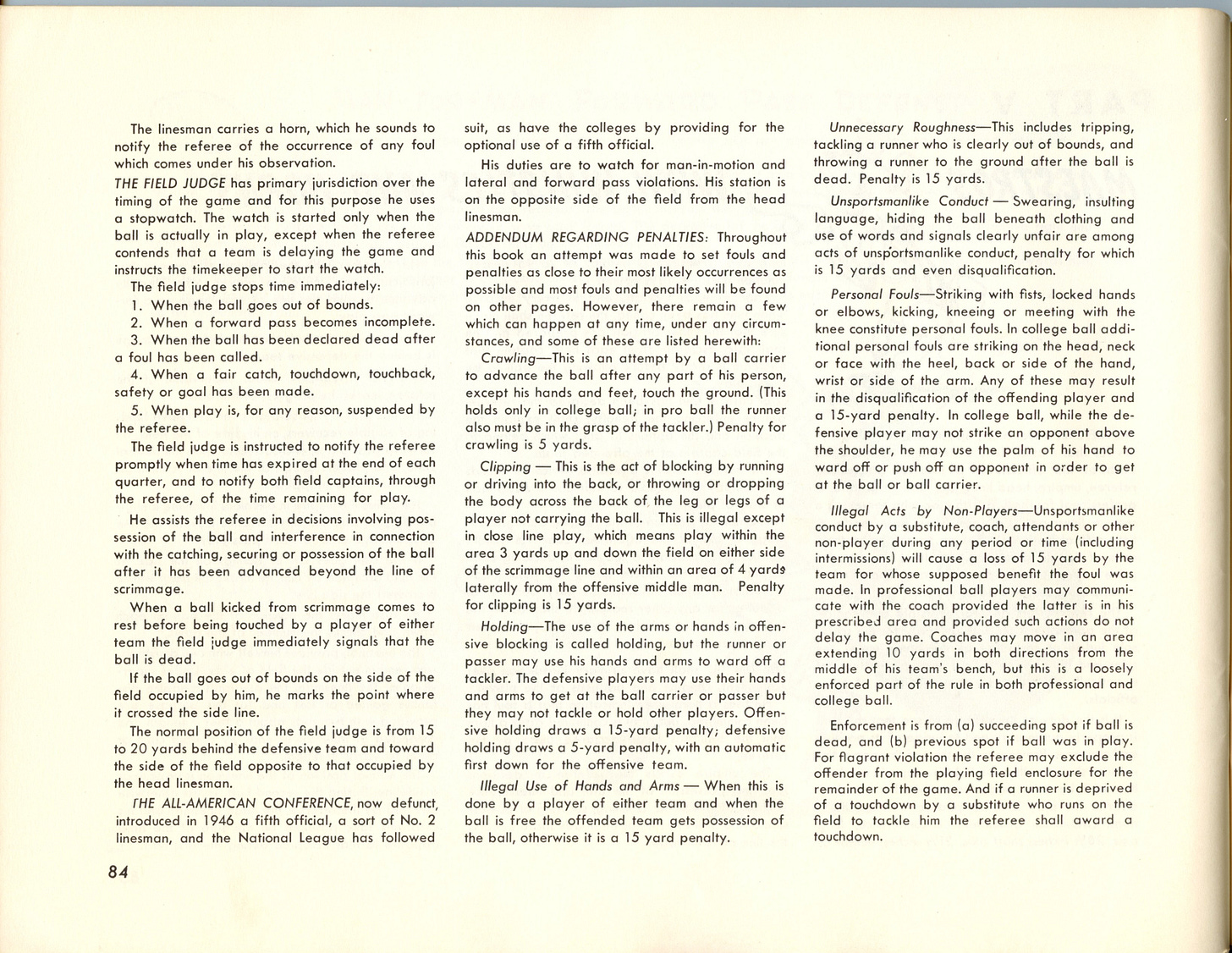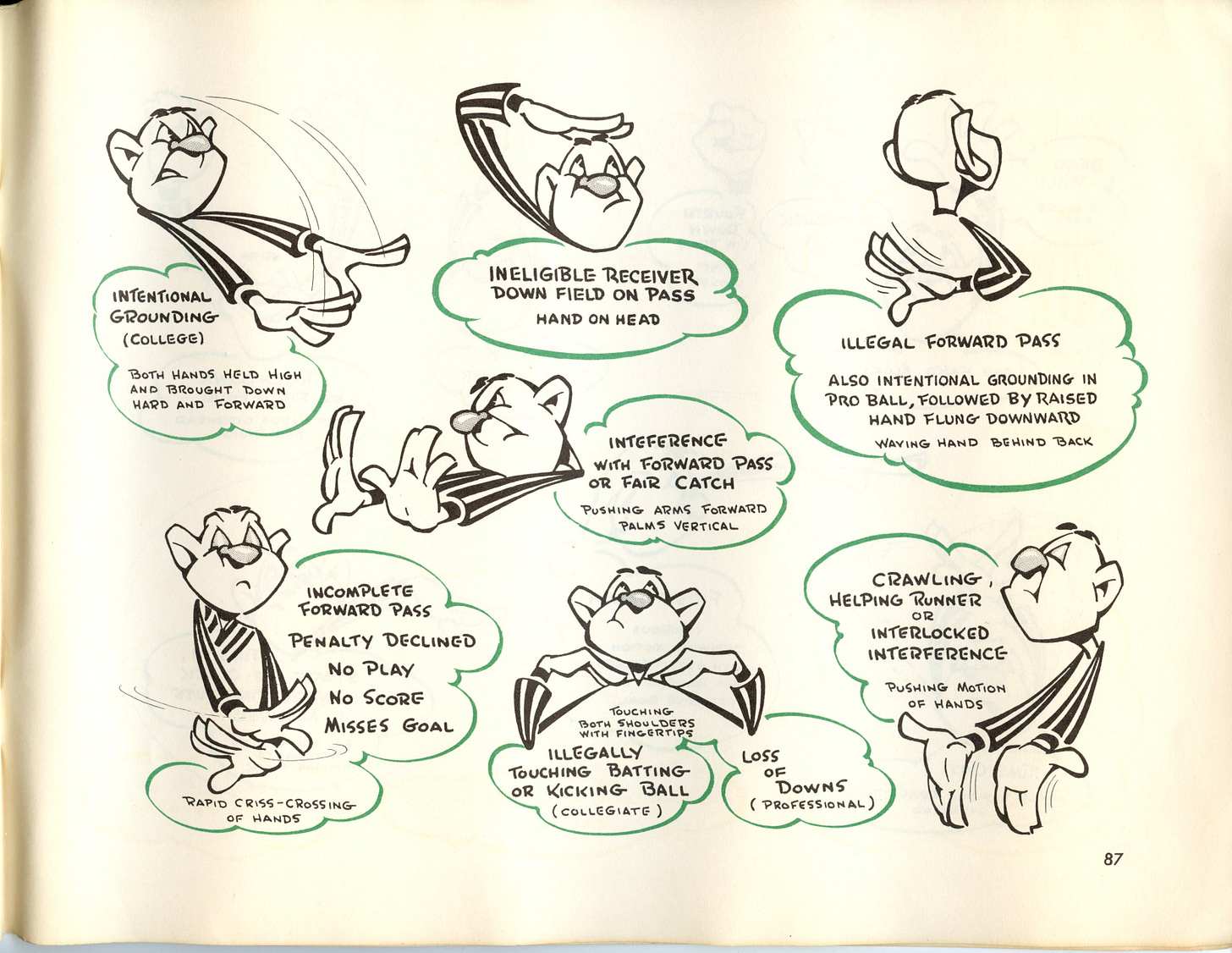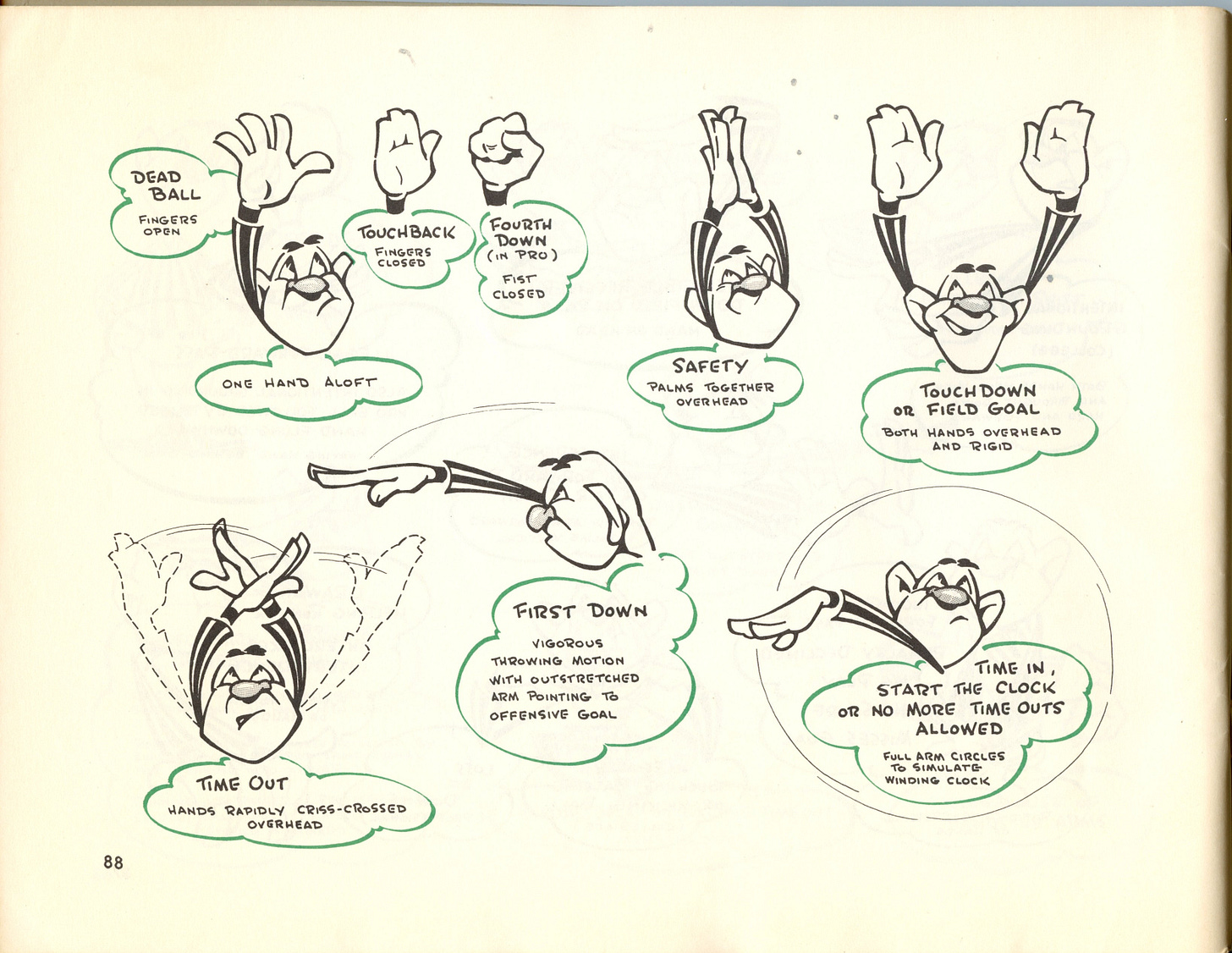Today's Tidbit... Officials and Their Signals
This is the seventh and final story in a series concerning Everybody's Football, a Massachusetts Mutual Life advertising premium from 1955. The book explains various elements of the game as it existed at that time. Previous stories from the series include:
Football has lots of rules and needs officials to help keep order. As much as folks complain about their calls, the availability of instant replay has demonstrated to most fans that the officials make the correct call far more often than they misstep, and the review process corrects many of the mistakes they make.
In football’s early days, the game officials included a referee, who was a neutral observer, and two umpires, one appointed by each team who advocated on their behalf with the referee. Fairly soon, football eliminated the advocating umpires and replaced them with a neutral one, followed by the addition of the linesman. Other officials joined the zebra herd as the forward pass stretched the field and the capabilities of the fellows in striped shirts.
As of the book’s writing, four or five officials handled games, compared to the eight that handle major college games today, so some of the duties explained on the following pages have been reallocated.
Beginning in the 1910s, Frank Birch developed a system of signaling penalties and other happenings on the field to the press and fans. The nationwide adoption of his signals in 1929 meant that fans could more readily argue or boo the calls since they finally knew which infraction was called in the field.
Some of Birch’s original signals are unchanged today, while others have changed because the penalty no longer exists, new penalties were added, or because people objected to the existing signal.
The officials’ signals as illustrated by Ted Drake are seen below. Most of the signals on the first page are the same today, but the unnecessary roughness signal has been changed and broken into different signals for each foul. They eliminated the military salute version on the signal after the American Legion complained it did not fit with the unnecessary roughness penalty.
The signals on the second and third pages are still used in college today. The 2025 NCAA rule book (downloadable for free) shows 38 different signals, while 20 are shown here.
That wraps up the review of Everybody’s Football. Hopefully, you enjoyed that look at the period publication and the fun artwork that made it special.
Football Archaeology is reader-supported. Click here to buy one of my books, donate, or otherwise support the site.






